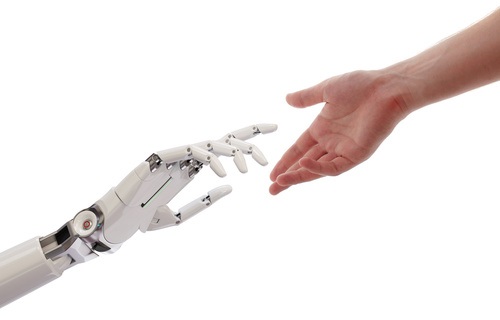‘I am an optimist and I believe that we can create AI for the good of the world. That it can work in harmony with us. We simply need to be aware of the dangers, identify them, employ the best possible practice and management, and prepare for the consequences well in advance’
Stephen Hawking, speech at the Web Summit on 6 November 2017.
Written by Elodie Thirion,

One of the most pressing issue for researchers, consumers, manufacturers and stakeholders concerning the rise of the robotics and artificial intelligence (AI) sectors lies in the uncertainty surrounding liability and the potential for damages to be incurred.
This ‘Cost of non-Europe’ report on liability and insurance related to robotics and AI aims to provide an insight into the regulatory gaps and challenges of the current liability and insurance frameworks in this field, as well as the potential benefits and opportunities of a harmonised EU regulatory framework. It has been prepared by the European Added Value (EAVA) Unit of the European Parliamentary Research Service (EPRS) for the European Parliament’s Committee on Legal Affairs (JURI) in support of its legislative initiative resolution on civil law rules on robotics (Rapporteur: Mady Delvaux).
This study starts by providing a brief introduction to robotics and AI. It sets out the definition(s) used for these concepts and presents their emergence and their social potential in the EU, before describing recent EU initiatives in the field. These include recent legal and policy initiatives, from the framework programme for research and innovation ‘Horizon 2020’ to the Ethics Guidelines for Trustworthy AI.
Second, the study outlines the current regulatory frameworks regarding liability and insurance applicable to robotics and AI in the EU. The lack of specific EU or national regulatory frameworks regarding liability and insurance in the context of robotics and AI is noted. At EU level, in particular the Product Liability Directive is reviewed. At national level, both civil law and common law regimes are discussed.
Third, the study highlights the existing regulatory gaps and challenges in the current liability and insurance frameworks. In particular, robotics and AI are prevented from reaching their full potential in the single market owing to the absence of a specific regulatory framework regarding liability and insurance in the context of robotics and AI, at EU level as well as at national level, and the consequent need for actors within the field of robotics and AI to fall back upon the Product Liability Directive and national civil law rules regarding liability and insurance.
Several EU policy options are considered in response to the regulatory gaps and challenges identified. First, there could be no additional intervention, entailing the application of the existing regulatory framework to current robotics and AI issues. Second, the EU could intervene by enlarging the scope of the Product Liability Directive to tackle the barriers of the current regulatory framework identified in the limited scope of the Product Liability Directive. Third, a new specific regulatory framework at EU level could be introduced to avoid fragmentation of the single market in robotics and AI. In this context, two policy options are considered: (i) an ‘electronic personhood’ could be created, or (ii) a new specific regulatory framework based on the existing regulatory framework could be introduced, allowing a tailor-made approach to robotics and AI.
The advantages of policy options aimed at introducing a harmonised, EU regulatory framework are to a large extent confirmed by the possible economic benefits and opportunities. A harmonised EU regulatory framework would stimulate greater research and development (R&D) activity by producers and increase the speed of uptake of these two essential new emerging technologies by consumers, resulting in a potentially positive impact in terms of gross domestic product (GDP). By 2030, EU GDP could be 0.04 % higher than it would otherwise be under the current regulatory framework.
However, the quantitative impact on the EU economy of harmonised regulation in the markets considered is highly uncertain, with some factors providing a positive effect and others negative. Overall, analysis of the scenario suggests that harmonised regulation would increase EU trade competiveness, bring a small increase in GDP and employment through increased R&D efforts, and bring a small decrease in GDP and employment once the wider economic impacts of robotics and AI are taken into account.
It is important to note that robotics and AI are wide and multi-faceted domains, crossing multiple legal disciplines. In order to provide EU citizens with an adequate EU regulatory framework relating to robotics and AI, as well as to promote the rise of robotics and AI in the EU, enabling it to become a global leader, coordinated legal action at the EU level would seem to be necessary.
Read the complete study on ‘Cost of non-Europe in robotics and artificial intelligence‘ in the Think Tank pages of the European Parliament.








[…] Cost Of Non-Europe In Robotics And Artificial Intelligence: A Comissão Europeia não é muito conhecida pela sua rapidez de reação, o que não significa que não esteja atenta às tendências que estão a moldar o nosso futuro. E sabe que é preciso um investimento europeu mais forte na Inteligência Artificial, sob pena de passarmos a um terceiro plano face aos Estados Unidos e China. […]